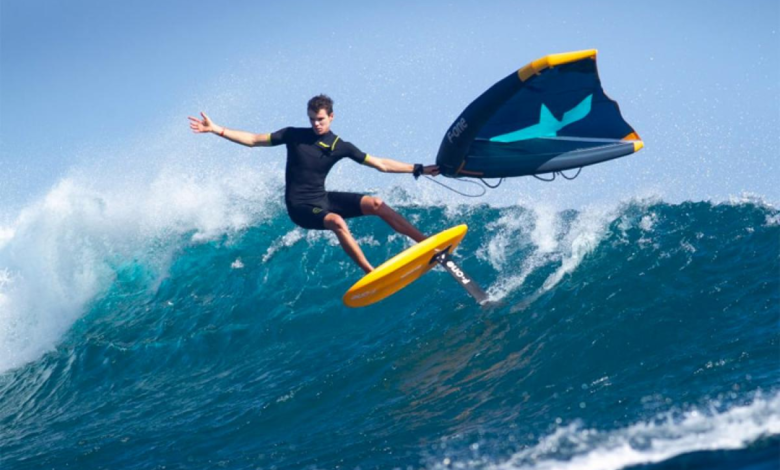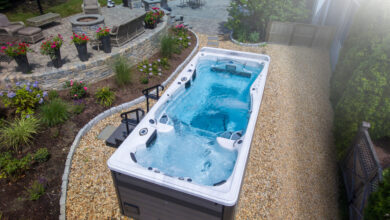What is Wingfoiling, and How is it Different from Other Water Sports?

Wingfoiling, an exhilarating and rapidly growing water sport, is capturing the attention of thrill-seekers and water enthusiasts worldwide. Combining elements of windsurfing, kiteboarding, and surfing, wingfoiling offers a unique experience that sets it apart from traditional water sports. In this comprehensive guide, we will delve into the intricacies of wingfoil board, explore how it differs from other water sports, and explain why it is quickly becoming a favorite among adventure seekers.
Understanding Wingfoiling
The Basics of Wingfoiling
Wingfoiling involves riding a hydrofoil board while holding onto an inflatable wing. Unlike windsurfing, where the sail is attached to the board, the wing in wingfoiling is handheld, allowing for greater freedom of movement and a more dynamic riding experience. The hydrofoil, mounted beneath the board, lifts the rider above the water’s surface, reducing drag and allowing for smooth, fast rides even in light winds.
Equipment Used in Wingfoiling
The essential gear for wingfoiling includes:
- Wing: An inflatable sail with a rigid frame that provides propulsion. The wing is typically made of lightweight materials like Dacron and polyester.
- Foil Board: A specialized board equipped with a hydrofoil. The hydrofoil consists of a mast, fuselage, and wings, enabling the rider to lift above the water.
- Harness: While not always necessary, some riders use a harness to help manage the wing’s power and reduce arm fatigue.
- Safety Gear: Helmets, impact vests, and leashes are commonly used to ensure safety during the sport.
Learning Curve and Accessibility
Wingfoiling has a relatively gentle learning curve, making it accessible to beginners. Many find it easier to pick up than kiteboarding or windsurfing, as it requires less equipment and space. However, mastering the hydrofoil and wing handling techniques can take time and practice. With proper instruction and safety measures, newcomers can enjoy the thrill of wingfoiling without extensive prior experience in water sports.
Comparing Wingfoiling with Other Water Sports
Wingfoiling vs. Windsurfing
Windsurfing involves riding a board while holding onto a sail attached to a mast. The main difference lies in the wing’s versatility in wingfoiling, which is handheld rather than fixed. This allows for more freedom of movement and the ability to perform a wider range of maneuvers. Additionally, wingfoiling’s hydrofoil component enables riders to glide above the water, providing a smoother experience even in choppy conditions. Windsurfing tends to require stronger winds, while wingfoiling can be enjoyed in lighter wind conditions, making it more accessible in various locations.
Wingfoiling vs. Kiteboarding
Kiteboarding involves riding a board while being pulled by a large kite. One significant difference is the safety aspect; wingfoiling is generally considered safer because the wing can be quickly depowered by letting go, reducing the risk of getting tangled in lines. Kiteboarding requires a large open space and consistent wind, while wingfoiling is more adaptable to different conditions. Additionally, the hydrofoil in wingfoiling provides a different sensation, as it lifts the rider above the water, offering a unique floating experience.
Wingfoiling vs. Surfing
Surfing is the art of riding ocean waves using a surfboard. While surfing relies on wave conditions, wingfoiling is wind-powered, allowing for riding in flat water or small waves. The hydrofoil aspect of wingfoiling provides a completely different experience from traditional surfing, as riders can achieve higher speeds and a more dynamic range of motion. Wingfoiling also allows for riding both upwind and downwind, offering a broader scope of exploration compared to surfing, which typically requires paddling back out to the lineup after each ride.
The Unique Appeal of Wingfoiling
Versatility and Freedom
One of the most significant attractions of wingfoiling is its versatility. Riders can enjoy the sport in various conditions, from light wind days to choppy waters. The ability to navigate both flat water and waves offers a unique blend of wind and wave riding. The handheld wing provides an unmatched sense of freedom, allowing for creative maneuvers and tricks.
Accessibility and Ease of Setup
Wingfoiling requires relatively minimal equipment, making it easier to transport and set up compared to other water sports. The absence of lines (as seen in kiteboarding) or heavy rigs (as in windsurfing) simplifies the process, allowing riders to get on the water quickly. This convenience, combined with a moderate learning curve, makes wingfoiling appealing to both newcomers and seasoned water sport enthusiasts.
Environmental Benefits
Wingfoiling’s low-impact nature makes it an environmentally friendly sport. The use of wind power eliminates the need for engines, reducing carbon emissions. The sport also encourages a deeper connection with nature, as riders harness natural elements to glide over the water.
Conclusion: The Future of Wingfoiling
As wingfoiling continues to evolve, it promises to become a staple in the world of water sports. Its unique combination of elements from various disciplines, ease of learning, and accessibility make it a captivating choice for those looking to explore the water in new and exciting ways. Whether you are a seasoned water sports enthusiast or a curious beginner, wingfoiling offers an unparalleled experience that is sure to leave a lasting impression.




